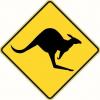Through the years, I settled into regular use of a variety of planes. Bear in mind, I mainly buy lumber surfaced 2 sides, jointed 1 side. Most used (always "tweaking something") is my LN 102 block plane. Second (and rapidly replacing the 102), is a Stanley 9-1/2, with a Ray Isles blade. For smoothers, a Clifton #3, a LN #4 (high angle frog) and one getting used more and more, a Millers Falls #4 with 2 piece lever cap. For the material I mainly used, I'm always reaching for my LN BU jointer-blade honed somewhere between 27 and 30 degress, it just always works.
I got a wide variety of special purpose planes (shooting, rabbeting, grooving, etc.), but the above list is what works for me. The key for me, is settling into regular use of the same planes so as to become thoroughly familiar with them. Yes, I have othersthat some will say should be used more (#4 and #7 Bedrocks, LN BU jack, etc.), but I used to the ones listed, and used to honing characteristcs, the feel of the knob and totes and especially how to squint just right, balance on my right foot, hold my tongue just so....and doing that, they all feel just right.
If the thunder don't get you, the lightning will.





 Reply With Quote
Reply With Quote



